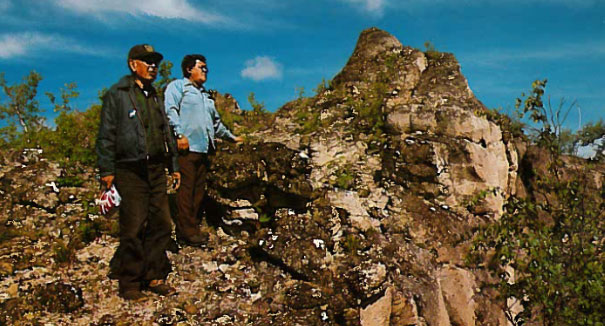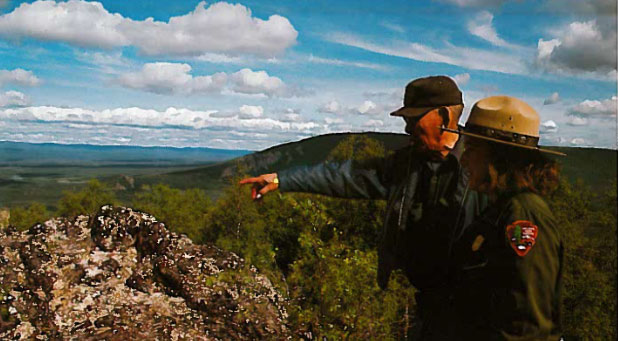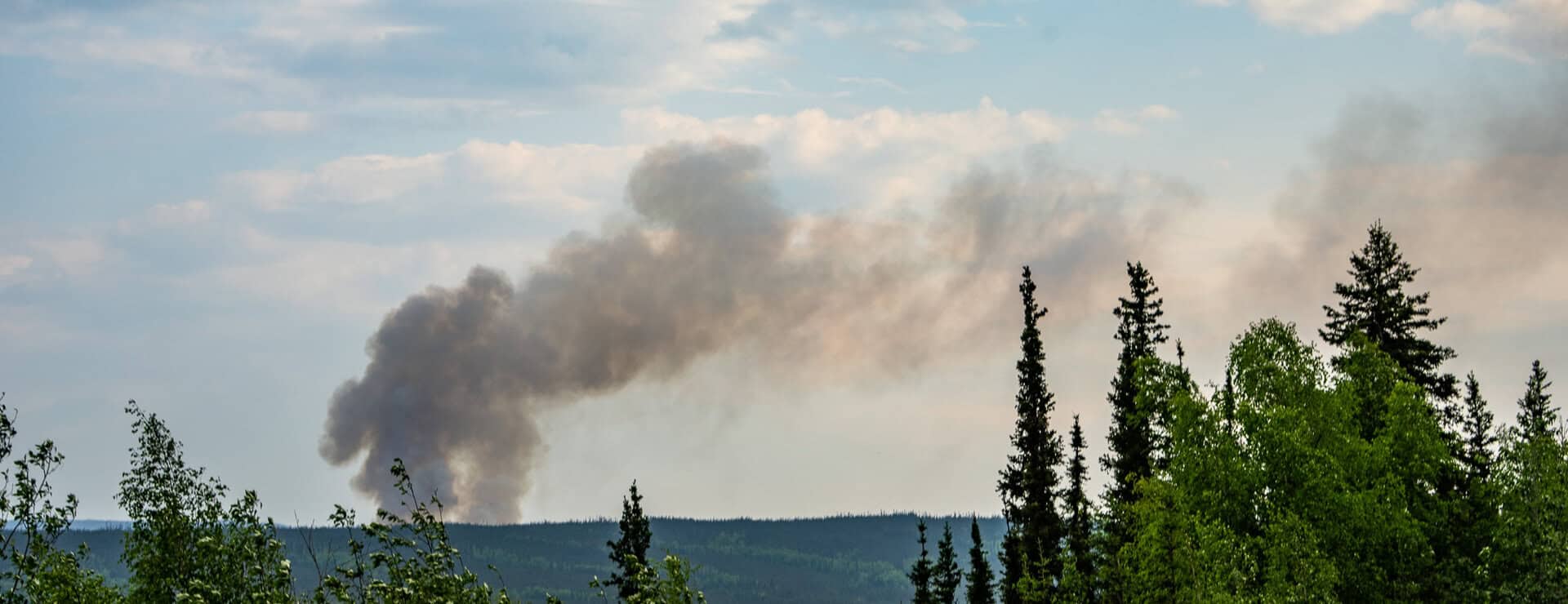Doyon’s 50-year anniversary will be June 26, 2022. As part of this celebration, Doyon will be republishing articles from our history. The following article, “In Search of a Legend” was originally published in Doyon’s 1982 Annual Report.

The rolling hills and muskeg flats of the Kantishna watershed have been a homeland for Athabascan people for countless generations. Though only a few visit the area today, there are old stories, or kk’adonts’idenee, which come from this region that are very much alive and still told by elders at Tanana and Nenana. The stories describe a place of reddish colored stone where birds were first baptized and given their names and where ducks obtained the colorful plumage they wear today. One story also tells of early people finding safe refuge among the reddish rocks during wars of long ago. Amid the rapid changes taking place today across Alaska’s lands, interest has grown in learning about and protecting such special places as important links with the cultural past. And so, a search began to find this legendary place known as “Geese House.”
The site was believed to lie somewhere along a series of ridges north of the Kantishna Hills not far from Lake Minchumina. The vast area of spruce and meandering waterways drew little attention in recent years, except for the occasional trapper making his winter’s living. When it became apparent in November of 1980 that lands in this region would likely contain the expanded boundary of Denali National Park, as well as adjacent lands selected as Native entitlement under the Alaska Native Claims Settlement Act, Doyon Vice-President of Lands Dave Williams suggested that a cooperative effort be made with the National Park Service in locating Geese House. Earlier, in May of 1980, Doyon’s Cemetery and Historic Sites Committee had already decided to work toward securing protection for important cultural resources on lands managed by the federal government.
A scan of the area’s history offered some helpful background. Prior to the turn of the century, the closest Athabascan settlement to Geese House was probably at Birch Creek. Native people there were believed to have had cultural ties to both the Telida Koyukon and the Koyukon of the lower Tanana River. Contact with Russian fur traders and missionaries in this area came as early as 1840 and brought swift change to these remote people. Disease drastically reduced the population. And commercial trapping and the sway of Christianity indelibly changed the lives of the survivors. About 1915, most of the Birch Creek people moved to Tanana following a last potlatch at the old settlement. Geese House seemed destined to fade into the past.
But legend and cultural memory have an uncanny way of surviving time and distance. Among the stories from Birch Creek that made it to Tanana, and later Nenana, were those that spoke of a place of steep rocks and the buffy red color of ocher or clay. It was depicted by the Koyukon name Ch’ideetsiyh Dinh, meaning simply, a place of ocher color. And it was imbued with mystical happenings as to the origins of waterfowl and their distinctive markings. As part of the place name, the sound “tsiyh” can also mean to apply paint or color. Even the venerable raven plays a part in the mythological color scheme at Geese House. According to one story, the raven became the color he is following a dunking in charcoal water by his fellow birds as a result of being too fussy over what colors he might wear.
Two people much interested in reviving the legend and reality today are Hank Ketzler, Sr., and Alfred Starr, Sr., both of Nenana. Working through Doyon’s Cemetery and Historic Sites Committee, Alfred Starr’s efforts have helped to fund a research project aimed at investigating the cultural history and mythology of Geese House. Hank Ketzler even tried on his own to find the site while on a long riverboat trip during the summer of 1981. But the major attempt to locate and verify the elusive place of ocher-colored stone was to come as part of the cooperative effort between Doyon and the National Park Service. Since there was some degree of certainty that the site was now located within Denali National Park and Preserve, the joint effort suggested almost two years earlier now seemed the best approach.
Under the blue skies on August 4th, 1982, Hank Ketzler and Alfred Starr touched down by helicopter near a stone formation with all the storied characteristics of Geese House. They were accompanied by anthropologist Susan Morton, who was studying the site for Doyon’s Cemetery and Historic Sites Committee. An earlier on the ground and aerial reconnaissance by National Park Service archeologist Craig Davis (also with the party) helped to pinpoint the most promising rock formation fitting the description. Several photos taken twenty years earlier by a party of Native hunters from Nenana also helped zero in on the target.

Peering down for the first time into the hushed shadows of the rock-walled chamber, both Hank Ketzler and Alfred Starr were silent for a long moment. Faded colors left by rain seeps or lichen grown offset the rich brown of the stone slabs that form Geese House. A crescent-shaped pool of water reflected blue sky on one wall, giving it a rich yellow cast. Over seventy-five feet long and less than half as wide, the grotto-like formation resembled a roofless house with sides rising from fifteen feet on the east and up to forty-eight feet on the west- topped by a pinnacle with an open view in all directions. On the floor, where perhaps shamen once worked their magical craft, a pair of birch trees now grow. Entering the room seems to cut all ties with the world outside.
Set in an otherwise bland landscape of timber and muskeg, this imposing and colorful rock formation must have wielded great power on an early people keenly tied to the signals of their environs.
“This sure looks like the right place.” Hank Ketzler said quietly as he scanned for details that might not match with old descriptions he had heard. Alfred Starr nodded in agreement. Alfred Starr had spent many years of his life trapping and fishing in the region, but never before visited the site he calls, Dits’inyee kkuno, a direct translation to Koyukon of the name Geese House. Later, photos taken at the site as part of the study would be shown to Nenana elder Thomas Albert, the only living member of the hunting party of twenty years ago. He too would verify the accuracy of the location.
“Places like Geese House have a value that money cannot buy.”
Places like Geese House have a value that money cannot buy. There are no known artifacts related to the site. It is not man-made and therefore not an example of cultural craft or artwork. Instead, its importance derives from its stature, its history (both mythic and real), and people’s reverence for the place. In short, it is sacred ground.





